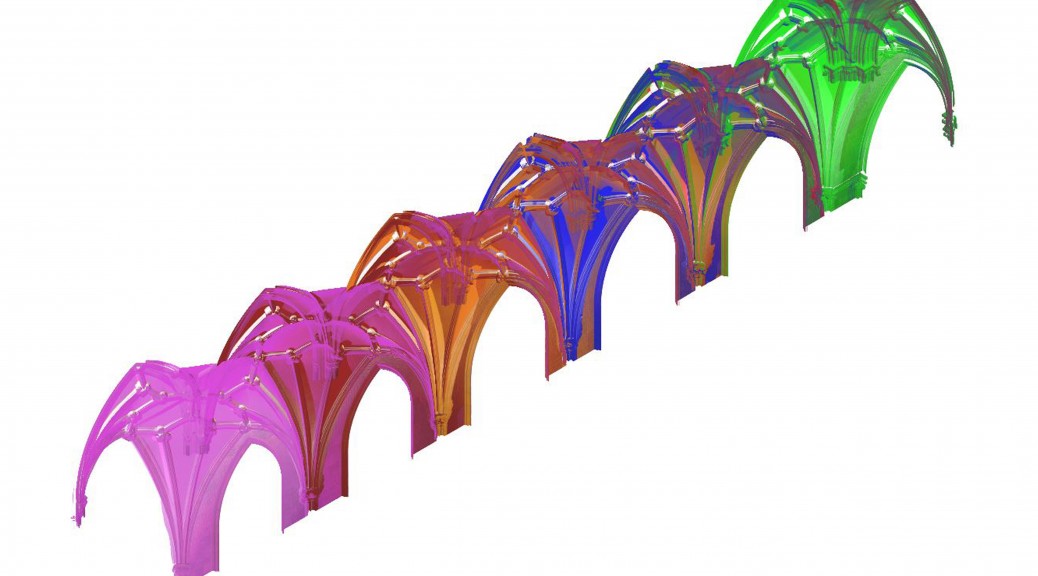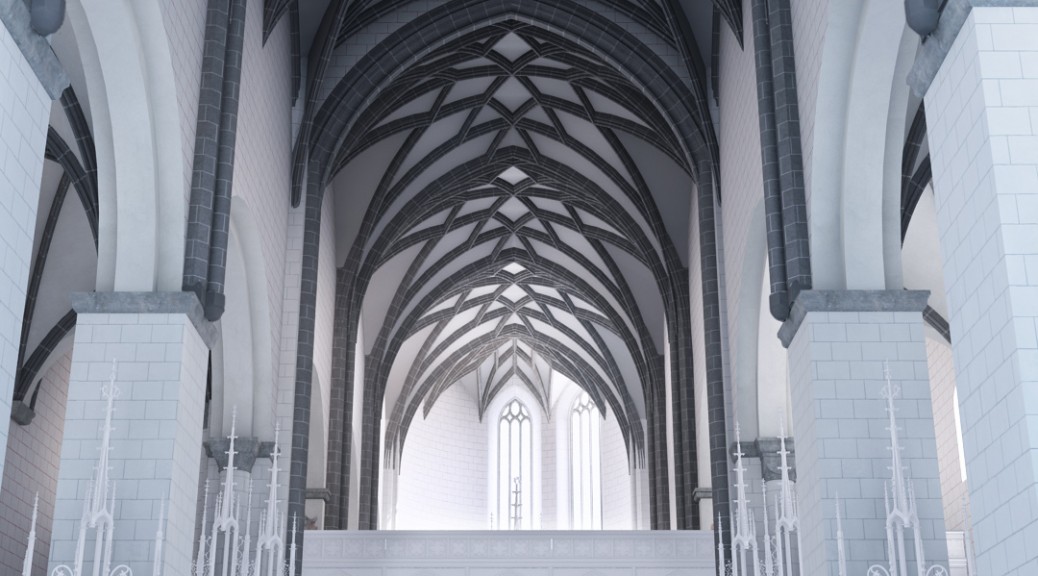Our article investigating the use of digital techniques to analyse the choir aisles at Wells cathedral has now been published in ‘Digital Applications in Archaeology and Cultural Heritage’. This article is free to view until 7th May 2017 through the following link:
https://authors.elsevier.com/a/1UkLO7szebZ9pb
Architectural historians have identified Wells cathedral as a key monument in the transition between high and late Gothic, a move in part characterised by the rejection of simple quadripartite or tierceron rib vaults for more complex vaults. Here we will show how digital methods are used to reopen questions of design and construction first posed in 1841 by pioneer architectural historian Robert Willis. Digital laser scanning documents vaults accurately, thereby establishing their geometries to a high degree of certainty and, at Wells, highlighting differences between the choir aisle bays which have previously been treated as a single design. Significantly, we will show how digital techniques can be used to investigate these differences further, using point cloud data as a starting point for analysis rather than an end point. Thus we will demonstrate how modern technologies have the potential to reignite historic debates and transform scholarly enquiries.
Webb, N., & Buchanan, A. (2017). ‘Tracing the past: A digital analysis of Wells cathedral choir aisle vaults’, Digit. Appl. Archaeol. Cult. Herit., 4, March 2017, pp. 19–27.


